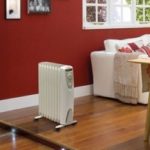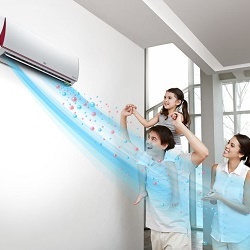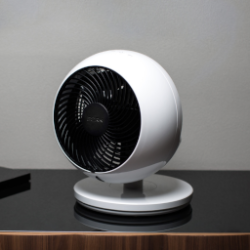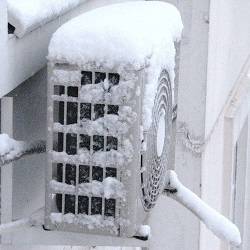Heat and economy is the motto of carbon infrared heaters
Infrared heaters more and more are replacing traditional heating appliances. Despite the fact that this type of device appeared not so long ago - at the beginning of the 21st century in Japan, it has already gained popularity and user confidence. What is a carbon infrared heater, and how is it different from other heating devices? Let's see!
Principle of operation
Carbon heater is in many ways similar to the usual infrared. However, the heating element is not a tungsten coil, but carbon fiberribbon-shaped, placed in a quartz tube with a vacuum.
An electric current, passing through the carbon fiber, heats it, producing infrared radiation.
Infrared is a soft thermal radiation that is completely absorbed by surrounding objects with almost no loss. The rays are capable of heating bodies and objects to a depth of 2 cm evenly over the entire area, while the air itself does not heat (for more details see the articleprinciple of operation of the heater with infrared radiation). Heating of the room is produced by heat transfer from heated objects. This property is widely used for outdoor heating.
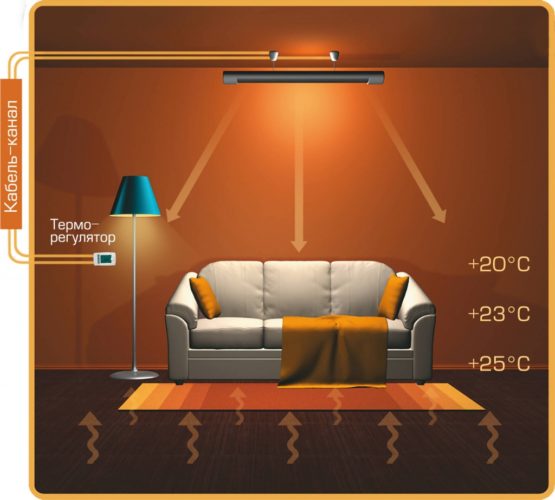
Design
The carbon heater design is a cone of steel with a vertically arranged heating element. Due to this placement of the infrared emitter, dust will not be able to settle on it.
Carbon thread, due to heating, does not increase in size and does not break and breaks with rapid cooling. This property provides a long service life of the heater - about 100,000 hours.
The carbon thread has a very high efficiencysince almost all electricity is converted to heat. The use of such heaters can save on electricity. In addition, it has a fibrous loose structure with a large radiating surface, due to which it heats up instantly (within 10-15 seconds).And as quickly able to cool, because it has low inertia and thermal conductivity.
The heating element in carbon infrared heaters is protected by a wire mesh, so it is simply impossible to get a burn.
Most often, such devices are equipped with thermostats and automatic shutdown of the device. In addition, they are absolutely fireproof, because when tilted or overheated, it will immediately turn off.
The maximum heating temperature of the device is 90 degreestherefore, the oxygen around it is not burned, and the air is not dried out. This is a fundamental feature of carbon heaters. For an example: spiral, nichrome devices can burn up to 80% of oxygen indoors. But when using carbon, the humidity level in the room will remain the same, and the microclimate - comfortable.
Advantages and disadvantages
Summing up, we can distinguish a lot of positive performance characteristics of carbon heaters:
- economical power consumption;
- long service life;
- protection from moisture and dust;
- compactness and light weight (up to 4 kg);
- mobility;
- high heat flow rate;
- instant heating and cooling;
- fire safety.
Interesting! These devices have a very positive effect on our body as a whole. And all because the infrared rays that can penetrate deep into the body, improve microblood circulation.
Medicine says "YES" to the use of infrared heaters and confirms their effectiveness in the treatment of certain diseases. This warming up well helps with back and leg pains, colds, especially in children, with arthritis and rheumatism.
The advantages of such devices, according to their owners, are as follows:
- low price;
- quiet work;
- light installation;
- compactness;
- profitability.
However, there are heaters and minuses. The glass tube of the heater is a fragile piece and may fall if dropped. Therefore, choosing such a device, it is necessary to give preference to models with a reliable grid of carbon emitter.
The device is not suitable for drying clothes, because when hanging things out there will be an emergency shutdown due to overheating.
The price of the unit is not exorbitant, but in comparison with traditional devices, it is noticeably higher.
Kinds
- wall mounted;
- ceiling;
- floor standing;
- rotary.
Consider all the models in turn:
Wall carbon models - one of the most popular and common. Heaters, paintings are very convenient, they take up little space on the wall, are able to decorate any interior thanks to its original design and a large selection of panels. However, this type of heater is not as effective as the ceiling heater.

To avoid severe overheating, it is not recommended to place wooden objects near the infrared emitter.
The wall heater is not dangerous for children, because its external panel heats up only to 60-75 degrees Celsius. Do not worry about the fact that it can damage the surface of the wall on which hangs, the temperature of the back panel of the heater does not exceed 45 degrees.
Ceiling heaters can successfully replace the heating type "warm floor", as they ensure proper air circulation in the room. The infrared stream moves from top to bottom, heats the objects that come across on the way, and then the heat from them rises again to the ceiling. Thanks to this movement, the air at the level of the legs will be slightly warmer than at the level of the head, which is very favorable for a person.
Mounted ceiling models are quite simple, and their diverse design will allow you to find a suitable option for your interior.
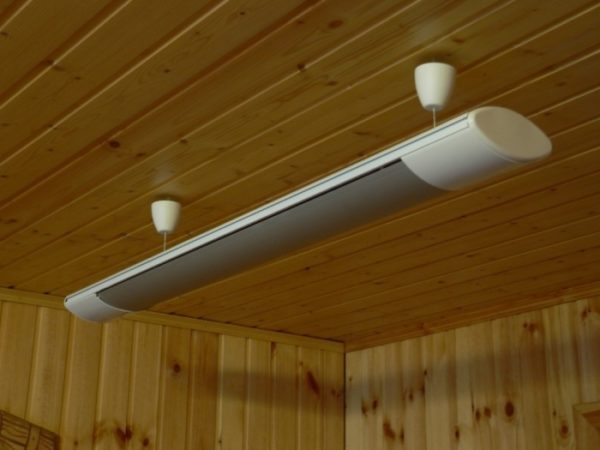
By virtue floor modelsdefinitely their mobility. You can always rearrange it or move it to another place, you can use it on the balcony or on the terrace, on the street, in the country, for heating offices, pavilions and warehouses. As you can see, the range of their application is very wide.
In addition, the floor products have a very beautiful design that will add extra comfort to your interior. In the dark, the heater will look like a fireplace, from which there is light and heat. At the moment, this option of heating can be called the most optimal.
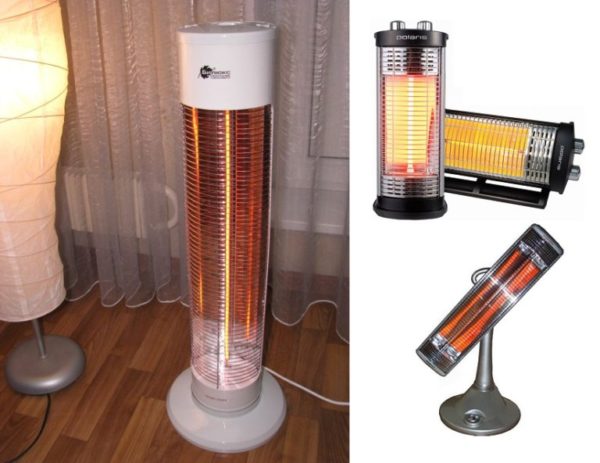
Turning- This is a kind of floor-standing appliances, but only with a rotating base. The angle of rotation is from 90 to 180 degrees, depending on the model (for more information about the types of devices, see the articletypes and types of infrared heaters).
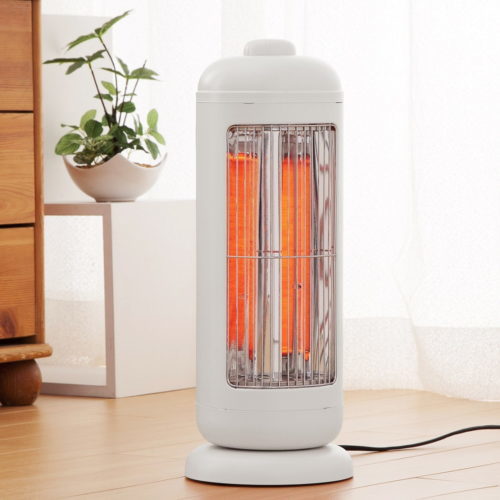
How to choose
Before buying, you should pay attention to the following technical parameters:
- power;
- heating area;
- degree of rotation;
- line voltage;
- weight, dimensions;
- protection;
- additional features;
- service life and warranty.
Of course, before you buy a carbon heater home, you first need to ask yourself the question: what is its purpose?
- Feet, for example, will be able to heat a floor-mounted unit with a capacity of up to 1 kW. There are also special foot warmers.
- To warm up a small living room where the whole family is going, choose the wall option.
- If the heating does not save and the apartment is cold, it is better to install a ceiling model.
- And for those who are primarily concerned with the design and beauty of their home, suitable floor type in the form of a fireplace or sculpture.
Device control occurs most often through rotary controls.
Top models of infrared heaters equipped with a remote control with which you can set the desired temperature, even without getting up from the couch. There are models with a timer that will turn off the heater after the time you set.
So, we can conclude that the unique properties of carbon fiber can reduce electricity consumption by almost 2.5 times with the same efficiency, when compared with traditional devices. If today it is very important for everyone, then why overpay?

/rating_off.png)






